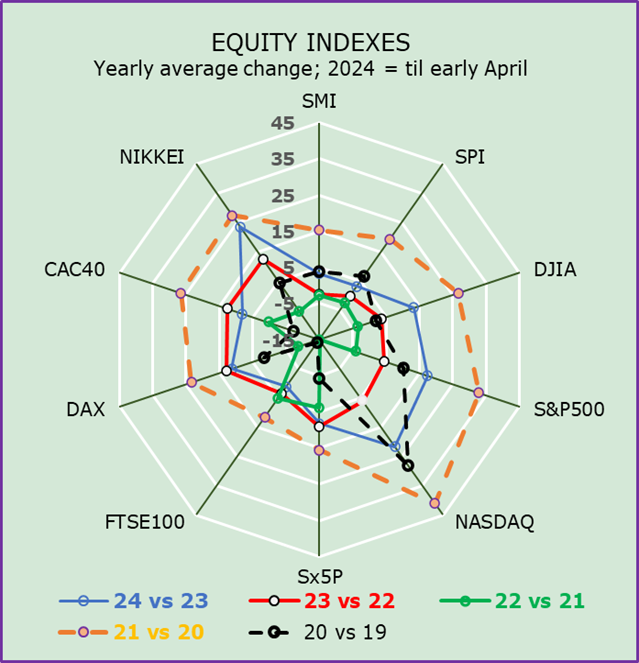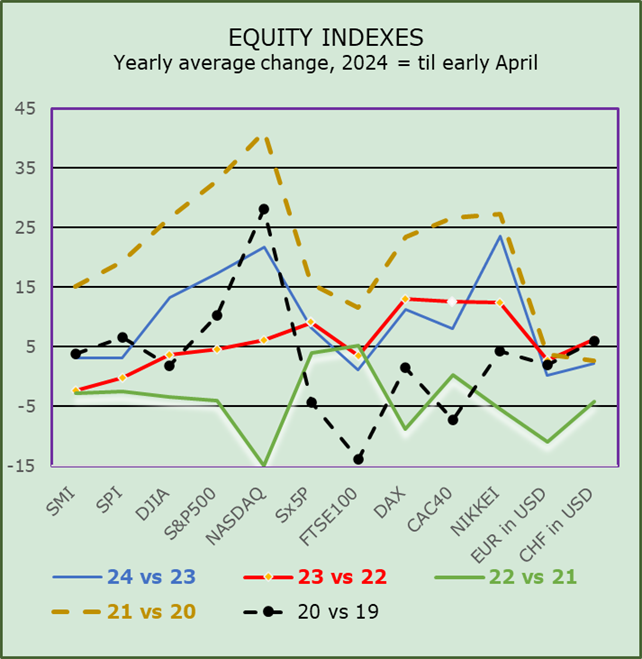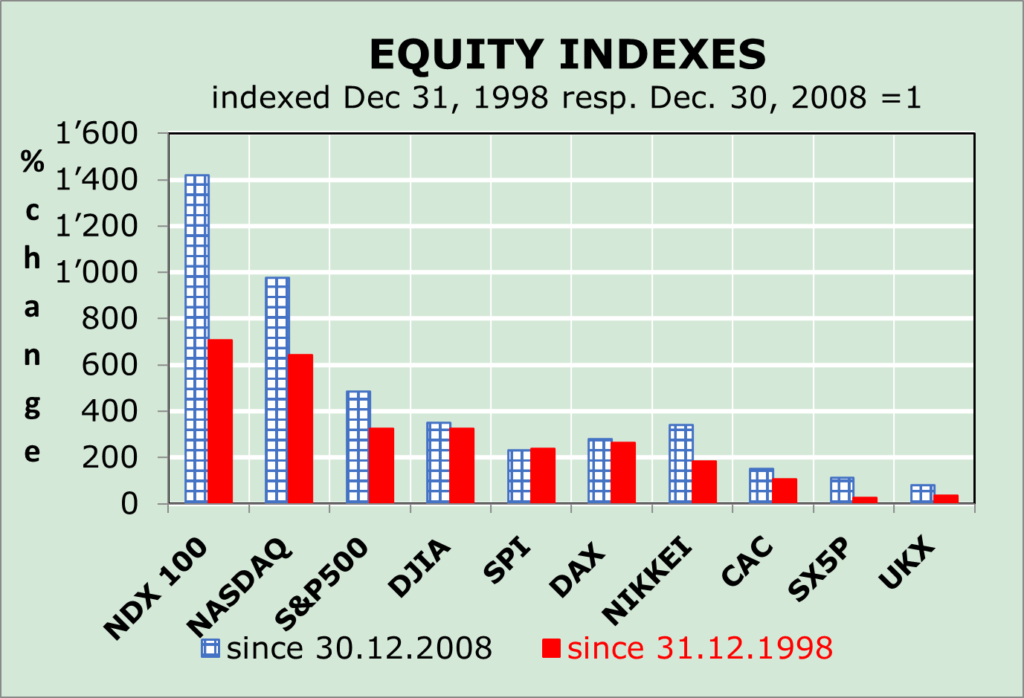EMR January 2025
Dear Reader,
WHAT HAVE WE LEARNED FROM 2024?
As most of us might recall, in 2024 we stressed the importance of the country and the currency selection. Let us recall the repetition of stock allocation and the respective focus on currencies as primary determinant.
DETAILS MATTER
As our readers may recall, throughout 2024 we repeatedly pointed out that neither the jargoning of Central Banks on the necessity of interest rate intervention nor coherent inflation fears have been the main cause of the ups and downs of the equity universe, but rather the significant technology gap between the US and the rest of the investment universe. Recently, we came across a surprisingly clear and highly provocative account of the whereabouts of the equity universe. In the article ´The EU faces a huge innovation gap’ Andrew McAfee from MIT pinpoints a huge gap. The following graphic clearly shows what we meant. Andrew McAfee has visualized it excellently. Let us therefore follow in his footsteps to find a solution for the future development of the stock market. The graphical presentation shows the following:

Examining the chart, we are faced with a very curious dilemma. Throughout 2024, we have contradicted the official and widely held assumption that the central banks’ focus on interest rate management would solve both the inflation and growth dilemmas as the primary determinant of the investment universe.
Examining closely the Andrew McAfee’s chart shown above, we note with great pleasure that neither the Central bankers’ primary focus on interest rate adjustments nor coherent inflation fears are the main and decisive cause of the ups and downs of the stock markets, but rather the considerable technological gap between the US and the rest of the investment universe.
Let us therefore follow his analysis with the aim of finding a clue to the possible developments on the stock market. Here is our summary:
- Recently five stocks have made astonishing gains, in US dollars, in terms of size and performance:
– Apple: 3’751
– Microsoft: 3’268
– Nvidia: 3’208
– Amazon: 2’363
– Google: 2’347
2. Other stocks follow with slightly lower growth rates, but still sizeable ones.
3. What the article describes is not simply the huge gap between the US and Europe, but rather that the European Market has little chance of becoming the next giant compared to the US.
4. Regarding our exposure to the EUR, we are quite concerned about the political uncertainties in both France and Germany.
Contextually we have a hard time to understand why the above-mentioned disparities are not taken more seriously, as compared to the focus on trying to control inflation by means of interest rate adjustments.
OUTLOOK 2025
Given the economic, political and social environment described above, the outlook for 2025 looks like a “very complicated and rather difficult task,” does it not? Are we still of the view that inflation should be the main enemy of policymakers and/or investors and therefore should be eliminated or at least contained, or do we begin to look at which economic sectors promise better results?
In the event that the authorities remain focused on fighting inflation through interest rate management, the outlook for returns remains rather subdued.
Why, one may ask? In times of war, the continuing Russian invasion of Ukraine, and similarly absurd developments in the Middle East, one might wonder how changes in interest rates might reduce the price of crude oil, especially in Europe? We should not forget that two of Europe’s largest economies (Franca and Germany) are going through a very tangled political situation, namely a serious lack of economic, social and political leadership. We think this context is quite problematic, if not dangerous.
If investors will start focusing on sectors such as technology, as has been and should continue to be the case in the US, the outlook might significantly “brighten”. Certainly. at this crossroads we cannot predict what the new US administration will do, as the possibility of an America First policy is at the forefront.
SUMMING UP
Despite all the forecasting difficulties in timing, as Swiss franc investors we prefer our home market, primarily for currency reasons. We assume that the CHF will continue to be in high demand.
International diversification speaks, in line with the technological developments once again for investment in the USA.
As far as EUR exposure is concerned, we are somewhat concerned about the political uncertainties in France and Germany.
HAPPY & PROSPEROUS NEW YEAR 2025
Suggestions welcome.














